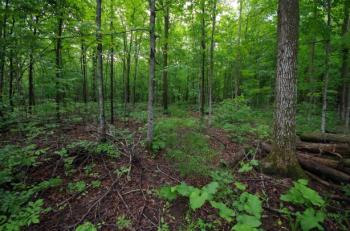SNC Publishes Report on Protecting, Increasing Forest Cover

A new report: “Protecting and Increasing Forest Cover in the South Nation Conservation Jurisdiction” was recently published by South Nation Conservation (SNC) and shared with its 16 member municipalities in Eastern Ontario. The report is a culmination of two years of consultation and review with local stakeholder working groups.
Reports produced in 2016 provided an update on the decline in forest cover and change in local landscape. In 2014, regional forest cover was at 28.1%, below Environment and Climate Change Canada’s minimum recommended level of 30%, with 13,148 acres of forests lost between 2008 and 2014.
This loss of regional forest cover is a result of land use changes and development; including agriculture, residential, industrial/commercial, solar farms, and unsustainable forest harvesting.
In response, SNC’s Board of Directors directed special funding to two stakeholder working groups to produce recommendations to help conserve and improve forest cover. The groups were composed of agricultural producers, as well as stakeholders from partner municipalities, First Nations, land development and forestry groups and entrusted community members.
A product of previous reports and discussion from two working groups were endorsed by the SNC Board and are summarized into this new report. Recommendations include suggested program enhancements, forest conservation initiatives, strengthened partnerships, review of legislative tools, policy changes and a strong focus on communications, education and outreach.
“Forests provide many important ecological, economic, social and cultural benefits to humans and the environment,” explains John Mesman, SNC’s Communication Lead. “We look forward to working with member municipalities to review and implement some of the ideas and suggestions in the report.”
Research and local data identify that decreases in forest cover results in decreases in water quality and quantity, increases flooding, droughts and erosion. Forests also sequester carbon, release oxygen and provide critical habitat for fish and wildlife.
Many of the suggestions within the report focus on ways to keep or add trees along watercourses and agricultural fields and to provide environmental, economic and financial incentives to help manage and create forests, especially in ecologically sensitive areas not suitable for farming.
The full report can be found here.
FOR MORE INFORMATION: Ronda Boutz, SNC Team Lead, Special Projects, 1-877-984-2948, ext. 251, rboutz@nation.on.ca.
###

